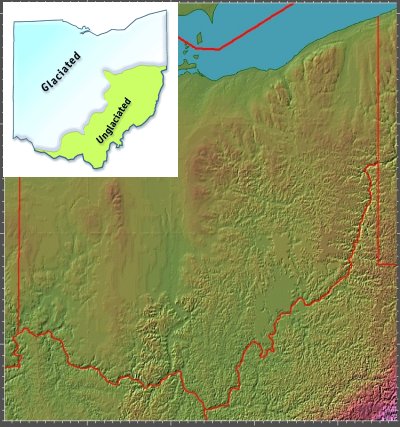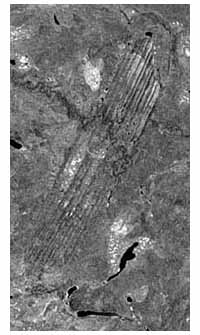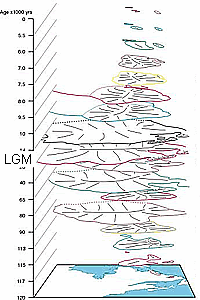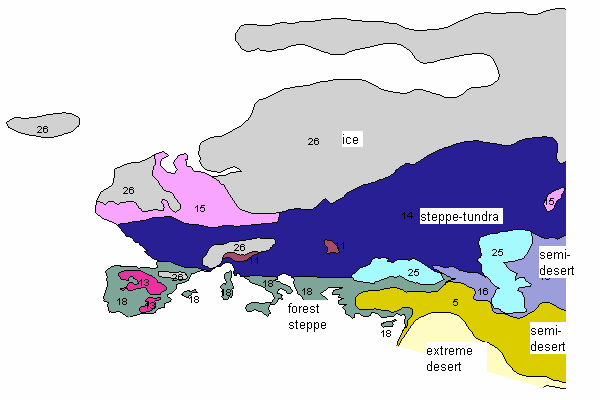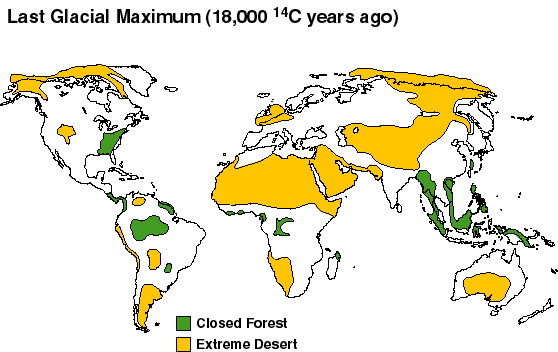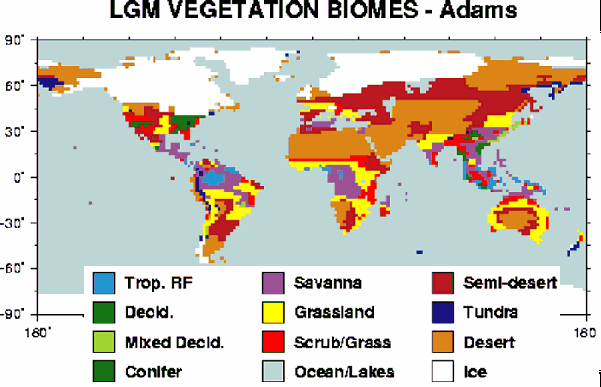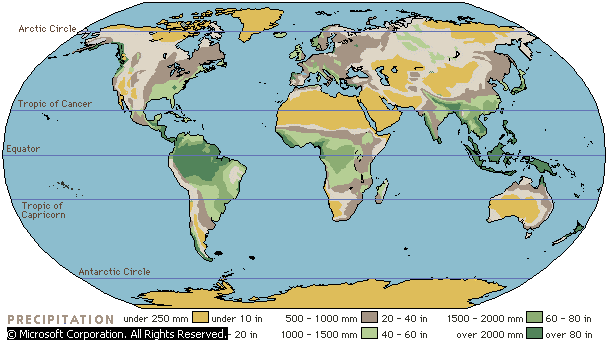From Robert Sungenis and Dr Hugh Owen
Damien,
Hugh's arguments are devastating to your position. I don't see how you can recover from them. I hope and pray that you will see the logic behind them.
Robert Sungenis
and
Dear Damien,
Pax Christi!
Thank you for sending me the latest issue of your magazine. The article on Pope Pius XI was especially interesting.
I am sorry that it has taken me so long to reply to your last email. It was hard to know where to begin in replying to your last article on the Flood.
Perhaps the most disheartening thing about the article was its apparent lack of piety. It was hard to imagine that a Catholic man of your intelligence and dedication could write an article so lacking in reverence for the Word of God as it has been understood in the Church from the time of the Apostles.
The Magisterial teaching on Biblical exegesis is quite clear. The Catholic commentator on the Bible is to accept the literal and obvious sense of Scripture, except where reason dictates or necessity requires (Providentissimus Deus).
We are also to revere the Fathers of the Church as the foremost commentators on the Word of God, especially when they all agree in any interpretation of Scripture that pertains to a doctrine of faith or morals (Council of Trent, Vatican I).
The Fathers agree that Genesis is, in the words of the Roman Catechism, a “sacred history.” It follows that the burden of proof is on the exegete who would question the literal historical truth of the Flood account and the plain sense of 2 Peter 3, where St. Peter teaches that the Noachic Flood was a global flood that destroyed the “world that then was.”
As Robert Sungenis pointed out to you in a previous email, St. Peter’s argument in 2 Peter 3 makes no sense if the Noachic Flood was a local flood. He mentions three global events: The creation of the whole world by God’s Word; the destruction of that whole world by the Flood; and the future re-creation of the whole world—the “new heavens and the new earth” through fire:
Scoffers will come in the last days with scoffing, following their own passions and saying, “Where is the promise of his coming? For ever since the fathers fell asleep, all things have continued as they were from the beginning of creation.” They deliberately ignore this fact, that by the word of God heavens existed long ago, and an earth formed out of water and by means of water, through which the world that then existed was deluged with water and perished. But by the same word the heavens and the earth that now exist have been stored up for fire, being kept until the day of judgment and destruction of ungodly men (2 Peter 3:3-7) (emphasis added).
In this remarkable prophecy, St. Peter predicted that “in the latter days”—a future time—“scoffers” would arise who would deny God’s supernatural creative action “in the beginning of creation” and at the time of the Noachic Flood, thus casting doubt on His sovereign intervention in the future at the Second Coming of Christ. Enlightened by the Holy Spirit, St. Peter foresaw that the scoffers would predicate their denials on the stability of the natural order—on the grounds that “all things have continued as they were” “since the fathers fell asleep.”
In modern times this principle has, of course, became known as “uniformitarianism,” or “the present is the key to the past.”Just as St. Peter had foretold, “uniformitarianism” became the guiding principle of Charles Lyell, Charles Darwin, and other naturalistic evolutionists who argued that natural scientists could extrapolate from present-day processes in the order of providence all the way back to the beginning of creation. St. Peter foresaw that to champion their evolutionary theory they would have to “deliberately ignore” the fact of the Flood, and, indeed, Darwin wrote in an unpublished manuscript of 1873: “Lyell is most firmly convinced that he has shaken the faith in the Deluge far more efficiently [in his writings on geology] by never having said a word against the Bible than if he had acted otherwise.”[1]It is truly heart-breaking to see you fall into the same error as the compromising theologians of the nineteenth century by evaluating God’s inspired account of the Noachic Flood by the naturalistic standards of unbelieving natural scientists like Lyell, Darwin and Plimer.
It would seem that by “common sense” explanations you mean “naturalistically sensible explanations.” But why should we expect to find explanations for the effects of the Deluge that make sense in terms of present-day natural processes when the Flood was a divinely-orchestrated, unique, never-to-be-repeated event?
Do we see animals of all kinds migrating on their own to a central location from every part of the earth today?
Do we see Virgin Births today?
Does that mean that these events didn’t happen?
In reality, even if one uses an inappropriate naturalistic standard for evaluating the literal historical truth of the Genesis account of the Flood, it still makes much more sense than your local flood hypothesis.
To understand why I say this, please just try to answer the following questions:
[AMAIC has numbered these questions to facilitate answering them further on]
If the Flood was a local flood, why did Noah spend 100 years building the Ark in the first place? Why didn’t God just tell him to move away, as He told Lot to get out of Sodom? [1]
Why did God send all of the animals to the Ark for safety? Why didn’t He just direct them to safe places elsewhere? [2]
Why was the Ark made big enough to hold all of the different KINDS—not breeds and species—of land vertebrate animals, when a local flood would have made this completely unnecessary? [3]
Why did God tell Noah to take birds on board when they could obviously have flown away from a local flood and survived? [4]
How could the waters have risen to over 20 feet above the “all the high mountains” without covering the earth? [5]
Other questions to ponder in the realm of geology are the following:
If Noah’s Flood was a local flood, why is there evidence of continent-wide deposition of sediment all over the earth? [6]
Why do we find the same sedimentary layers on multiplecontinents, such as massive chalk, sandstone, and limestone deposits that extend from one continent to another? [7]
Why does C-14 dating of material from every part of the geological column indicate that it was all laid down at the same time? [8]
Why do we find soft tissue and intact DNA which must be of recent deposition in many fossils that are alleged to be tens or hundreds of millions of years old according to mainstream geology? [9]
How do you realistically model an Ice Age without a prior global Flood? [10]
Why would an all-wise, all-loving God allow His Church to teach a completely false account of the early history of the world, based on a literal historical interpretation of His Word, only to allow the same Church to be “enlightened” by men like T.H. Huxley who hated the Catholic Church? [11]
I hope and pray that you will use your great talents to build up the faith of your readers and stop sowing unjustified doubts in their minds about God's revelation as it has been understood in and by the Church since the time of the Apostles.
Your brother in Christ through the Immaculata,
Hugh Owen
* * *
Dear Hugh
I’m glad that you at least found the article on Pope Pius XI “especially interesting”.
On the next page (and others) [in AMAIC Newsletter] you may read more on that same subject, with the issue of ‘Creation Science’ to be addressed by me, yet again, beginning on p. 12.
Yours in Jesus and Mary
Damien.
An Ice Age after the Flood ??
"I will not again curse the ground any more for man's sake: ...
....
There’s a Hole in the Ark
-------------------------------------------------------------------------
… is the global version of the biblical Flood, as espoused by Hugh and Bob, properly watertight, having no gaping hole in its‘roof’ which might let in a deluge of problems?
-------------------------------------------------------------------------
Og of Bashan was a fearsome giant in the era of Moses (Deuteronomy 3:3), but he also turns up in Jewish legends, anachronistically (about one and a half millennia earlier), at the time of Noah’s Flood.
Though Noah tries to bar Og from the Ark, the cunning giant either manages to ride a unicorn alongside the Ark, taking for himself the food that Noah parcels out to the unicorn, or, Noah actually passes food to Og himself through a hole in the Ark’s roof – the giant having been given a special dispensation by Noah to perch atop the Ark. This, even during the Flood. (With a friend like this ‘Noah’ who need enemies!).
The real biblical Og also had a massive bed:
“His iron bed is still in Rabbah of the Ammonites, nine cubits long and four cubits wide,
{Some commentators say that ‘bed’ here should actually be translated as‘sarcophagus’.
Was King Og the original Procrustes the inn keeper, who made all travellers fit his bed by chopping them or stretching them to size? Probably not. For there is another Jewish legend that it was actually the cruel people of Sodom who had such a‘Procrustean’ bed – this being perhaps just another case (alongside the many examples given in this MATRIX and Supplement) of Greek appropriation of the Near East, since Sodom well pre-dated any Procrustes of Attica}.
Now, is the global (‘Creation Science’) version of the biblical Flood, as espoused by Hugh and Bob, properly watertight, having no gaping hole in its ‘roof’ which might let in a deluge of problems?
Is it accurate, or is it anachronistic, like the Og legend above?
Is it properly biblical, or just an entertaining story like that of Og and the unicorn?
Is it compatible with the original (biblical) account, or yet a further case of western Procrusteanisation of an ancient Near Eastern set of documents (the Flood account having been written by (i) Noah, and by (ii) his three sons: Cf. Genesis 6:9; 10:1)?
Is it realistic, or as fanciful as Og’s unicorn?
Does Hugh’s and Bob’s version float, or should it be, like Og, sealed in an iron sarcophagus and laid permanently to rest?
Since, as the reader noted on p. 8 [of our Newsletter]: “That email from Hugh [Owen] didn’t seem to contain anything you wouldn’t have heard of already …”, and since I have already in previous issues covered most of his queries in detail, I do not want to dwell overmuch on them again.
The ‘Creation Science’ version of the Flood
is neither biblical, realistic or accurate
It is neither biblical nor grounded in reality.
It reminds me a bit of what I read about some pious Jews who have so exalted a view of Mount Sinai, for instance, that they would never conceive of actually going and searching for it as a real concrete mountain in a particular location. For them Mount Sinai is way too lofty for that sort of profane attitude. It is semi-mythical.
It is probably something of this kind of mentality that led Byzantine Christians to opt for the impressive mountain, Jebel Musa (in Sinai Peninsula), for Mount Sinai, despite its being a totally unrealistic choice - the Procrustean imposition of a pre-conceived model! The experienced archaeologist, Professor Emmanuel Anati, instead, realistically weighed up all sorts of logistical factors, availability of wells for drinking water, biblical tribes named in association with the Hebrews, relevant archaeology, and so on, to locate a Mount Sinai (viz., Har Karkom) that entirely fitted the biblical data.
Though God is infinite, the Absolute being, the Incarnation is very much rooted in our concrete reality. Much of what Pope John Paul II wrote about as the erroneous approach to the Scriptures by Fundamentalism is therefore relevant to our case:
In his address to the Pontifical Biblical Commission, Pope John Paul II said:
The God of the Bible is not an absolute Being who, crushing everything he touches, would suppress all differences and all nuances. On the contrary, he is God the Creator, who created the astonishing variety of beings ‘each according to its kind,’ as the Genesis account says repeatedly (Gn 1). Far from destroying differences, God respects them and makes use of them (cf 1 Cor 12:18, 24, 28). Although he expresses himself in human language, he does not give each expression a uniform value, but uses its possible nuances with extreme flexibility and likewise accepts its limitations. That is what makes the task of exegetes (Biblical scholars) so complex, so necessary and so fascinating!” (page 18)
Hence, Hugh’s accusation is to be expected:
…. Perhaps the most disheartening thing about the article was its apparent lack of piety. It was hard to imagine that a Catholic man … could write an article so lacking in reverence for the Word of God as it has been understood in the Church from the time of the Apostles.
The Magisterial teaching on Biblical exegesis is quite clear. The Catholic commentator on the Bible is to accept the literal and obvious sense of Scripture, except where reason dictates or necessity requires (Providentissimus Deus). ….
And Hugh again raises the matter of the sediment, his question [6], thought by ‘Creationists’ to have been deposited by the Noachic Flood, but with six miles of it located beneath the riverine world of Adam in Genesis 2. That is “the literal and obvious sense of Scripture”, since the Bible tells us that that was the nature and scope of the ancient world. And Moses later makes editorial notes to specify that those rivers know to Adam and his contemporaries still constituted the riverine system of Moses’ own world.
So apparently it was still the world of Noah, since his era came between Adam and Moses, St Peter’s “world that then was” (2 Peter 3).
This is apparently, then, the world that one has to deal with in terms of interpreting the biblical Flood. Not Bob’s and Hugh’s global world that now is.
In fact, it was still the extent of the world as known at the time of Jesus Christ and the Apostles, as attested by the Pentecost event, with people from ‘all the nations under heaven’, which, when itemised, are still of the approximate ancient riverine world, geographically, of Adam, Noah and Moses. Thus Jesus can say of the tiny step, on a global map, of the Queen of the South, as her having come ‘from the ends of the earth’ to visit Solomon. We would not say that!
And, at the time of Og, King Balak of Moab spoke of the Israelites encamped in the plains of Moab as “cover[ing] the face of the earth” (Numbers 22:5).
We definitely would not say that!
But Hugh and Bob anachronistically read globality into the Semitic mind and the Church Fathers (see Hugh’s [2]-[5]): All the animals; all different kinds; the birds; all the mountains; all the earth. That is not ‘logical’!
How Long to Build the Ark?
[1] 120 years to build Ark, says Hugh.
Answer: According to one of Hugh’s favourite authorities, though, Answers in Genesis:
We would end up with a tentative range of about 55 to 75 years for a reasonable maximum time to build the Ark. Of course, it could be less than this depending on the age that Noah’s sons took wives.
Moreover, both Jewish and Blessed Anne Catherine Emmerich tradition seem to concur that Noah left off building for long periods of time. Thus Anne Catherine (Life of Jesus Christ):
It was long before the ark was completed, for Noe often discontinued it for years at a time. Three times did God warn him to proceed with it. Each time Noe would engage workmen, recommence and again discontinue in the hope that God would relent. ….
The Ice Age?
[10] How do you realistically model an Ice Age without a prior global Flood?, asks Hugh.
Answer: Ever tried growing grapes in an Ice Age (not to mention lying around naked) (Genesis 9:20-21)?
Read also:
An Ice Age after the Flood ??
As proposed by some creation scientists !
Reference: ICR Impact #361 "Are Polar Ice Sheets Only 4500 Years Old?", June 2003
(http://www.icr.org/newsletters/impact/impactjuly03.html)
(http://www.icr.org/newsletters/impact/impactjuly03.html)
"And you, be ye fruitful, and multiply
bring forth abundantly in the earth,and multiply therein.
(Genesis 9:7)
bring forth abundantly in the earth,and multiply therein.
(Genesis 9:7)
So while the LORD is instructing Noah and his offspring to be fruitful, the scientists at the Institute for Creation Research are saying that He make their life very difficult after the flood by putting them through an Ice Age!
While the LORD in Genesis 8:21-22 says:
"I will not again curse the ground any more for man's sake: ...
While the earth remaineth, seedtime and harvest, ... shall not cease"
"And Noah began to be an husbandman, and he planted a vineyard:"
Genesis 9:20
Genesis 9:20
Apparently while still living amongst the "mountains of Ararat"
since the migration of his offspring to
"a plain in the land of Shinar" does not come until Genesis 11:2.
since the migration of his offspring to
"a plain in the land of Shinar" does not come until Genesis 11:2.
Note that three glaciers (black areas) are shown in the Black/Caspian Sea region on the map below of Eurasia during the ice age maximum (LGM), which is not really a detailed map. Therefore, the task of growing a vineyard amongst the mountains of Ararat in the middle of an ice age would be comparable to growing one now in the valleys amongst the glaciers in Alaska! (P.S. Vineyards are not grown in Alaska)(1)
The following figure [go to original article] shows the climatic condition of Eurasia during the ice age maximum, with the brown area being cold and desert or semi-desert, including the mountainous areas between the Black and Caspian Seas, with glaciers in the higher altitudes (black areas). The green and yellow show areas favorable for human habitation in wet and dry periods, respectively. (Red shows the extended land area due to low sea levels) ….
Perhaps a more realistic sequence regarding the Ice Age in relation to the Flood would be that as proposed by Pitman and Ryan in their Noah’s Flood:
….
The story of Noah and the great flood is one that so permeates our culture that generations of geologists have devoted their lives to looking for evidence of a prehistoric worldwide flood. But it was not until the 1990's that geologists William Ryan and Walter Pitman gathered clues pointing to an actual ancient flood in the Middle East about 7,500 years ago. Sediment core-samples the scientists took from the bottom of the Black Sea revealed sections of once-dry, sun-baked land.
Geologists Walter Pitman and William Ryan were the first to gather evidence that the Black Sea flooded 7500 years ago
|
These sediments were then covered by sections of uniform mud, strongly suggesting that these plains underwent a long-ago influx of saltwater. Though not worldwide, this cataclysmic event occurred at what could have been a locus of human activity at the time.
In their 1998 book,Noah's Flood: The New Scientific Discoveries about the Event that Changed History, Ryan and Pitman suggest the Black Sea was once a much smaller, land-locked freshwater lake, fed by ancient rivers, and surrounded by fertile plains. Neolithic people, Ryan and Pitman suppose, would have flocked to farm these Eden-like plains to farm them while supplementing their diets with the lake's abundant shellfish.
At this time - about 7,500 [sic] years ago - the global climate was still rapidly warming following the last Ice Age, causing the seas to rise.
Ryan and Pitman hypothesize that, when sea levels rose beyond a critical point, the Mediterranean Sea overflowed, deluging the Black Sea basin with salty water and destroying the fertile plains around the once-shallow freshwater lake.
….



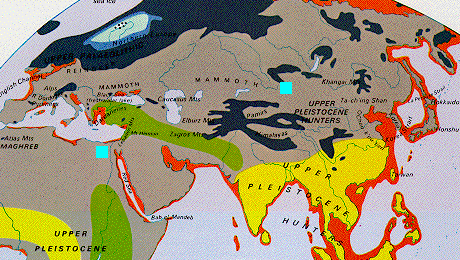
![[IMAGE]](http://www.accuracyingenesis.com/fig1_sml.gif)
![[IMAGE]](http://www.accuracyingenesis.com/pang.gif)
![[IMAGE]](http://www.accuracyingenesis.com/polar.gif)
